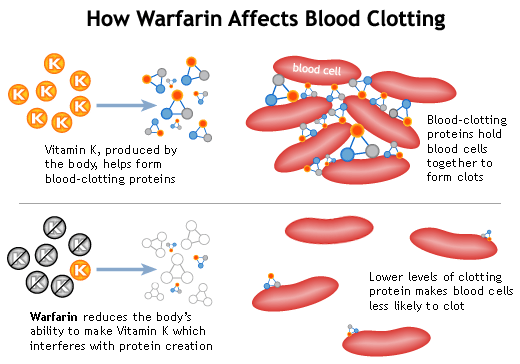

The anticoagulant effect develops after 3 to 5 days it depends on the dose as well as on the genetic factors, diet, concomitant drugs ( Table 3.1-2), and comorbidities (due to the reduction of the endogenous sources of vitamin K, a more potent anticoagulant effect is achieved in the course of long-term antibiotic therapy, in patients with diarrhea, and in patients treated with liquid paraffin).Ģ. Mechanism of action of vitamin K antagonists ( VKAs): Acenocoumarol and warfarin inhibit the posttranslational modification of coagulation factors II, VII, IX, and X, as well as protein C and protein S, which are necessary for the normal activity of the factors. Antithrombotic Therapy for VTE Disease: CHEST Guideline and Expert Panel Report. Measurement and reversal of the direct oral anticoagulants. How and when to measure anticoagulant effects of direct oral anticoagulants? Practical issues. Tripodi A, Braham S, Scimeca B, Moia M, Peyvandi F.

Antithrombotic Therapy for Atrial Fibrillation: CHEST Guideline and Expert Panel Report. American Society of Hematology 2018 guidelines for management of venous thromboembolism: optimal management of anticoagulation therapy. 2019 international clinical practice guidelines for the treatment and prophylaxis of venous thromboembolism in patients with cancer.

PMID: 33895845.įarge D, Frere C, Connors JM, et al International Initiative on Thrombosis and Cancer (ITAC) advisory panel. 2021 European Heart Rhythm Association Practical Guide on the Use of Non-Vitamin K Antagonist Oral Anticoagulants in Patients with Atrial Fibrillation.


 0 kommentar(er)
0 kommentar(er)
